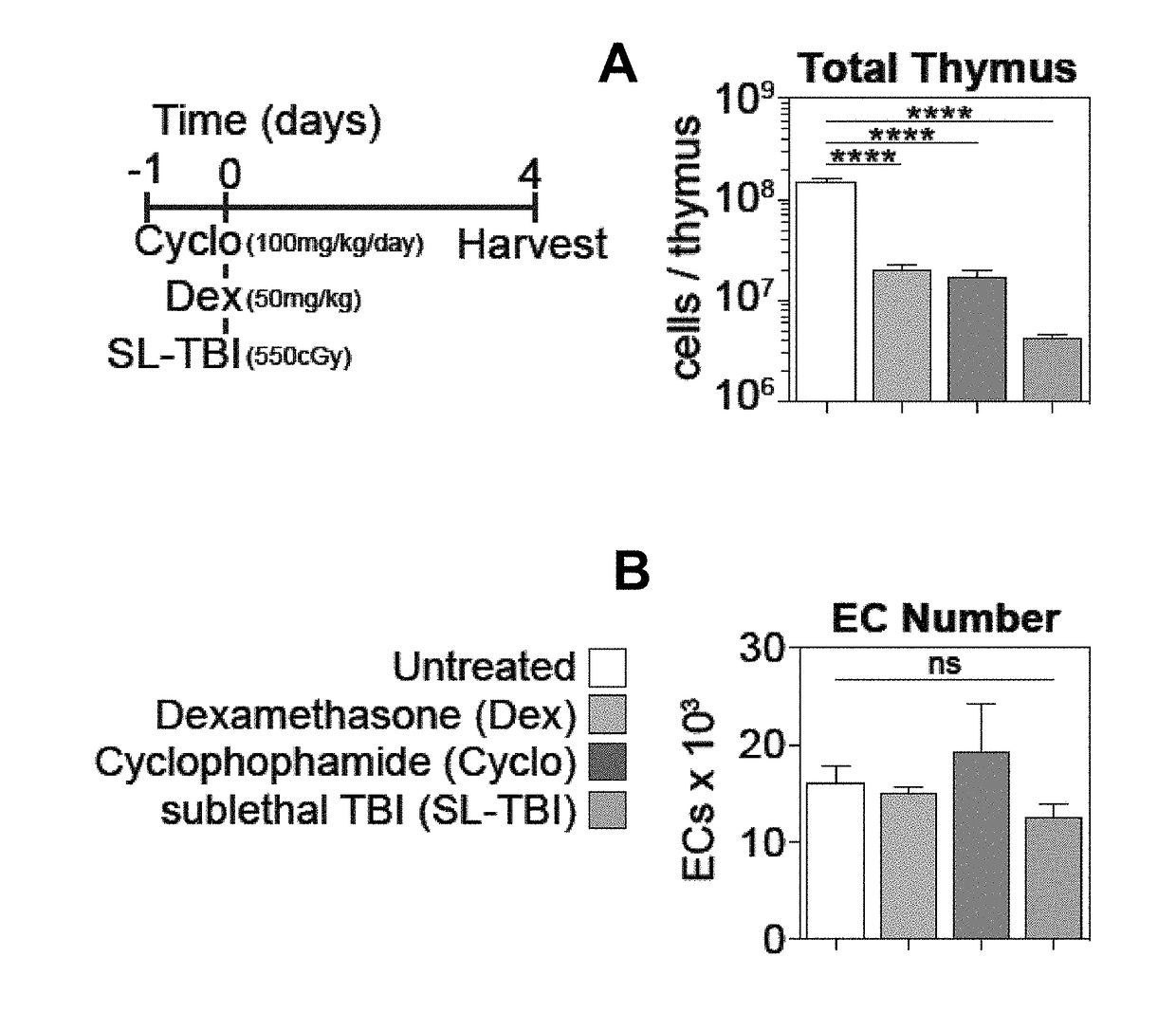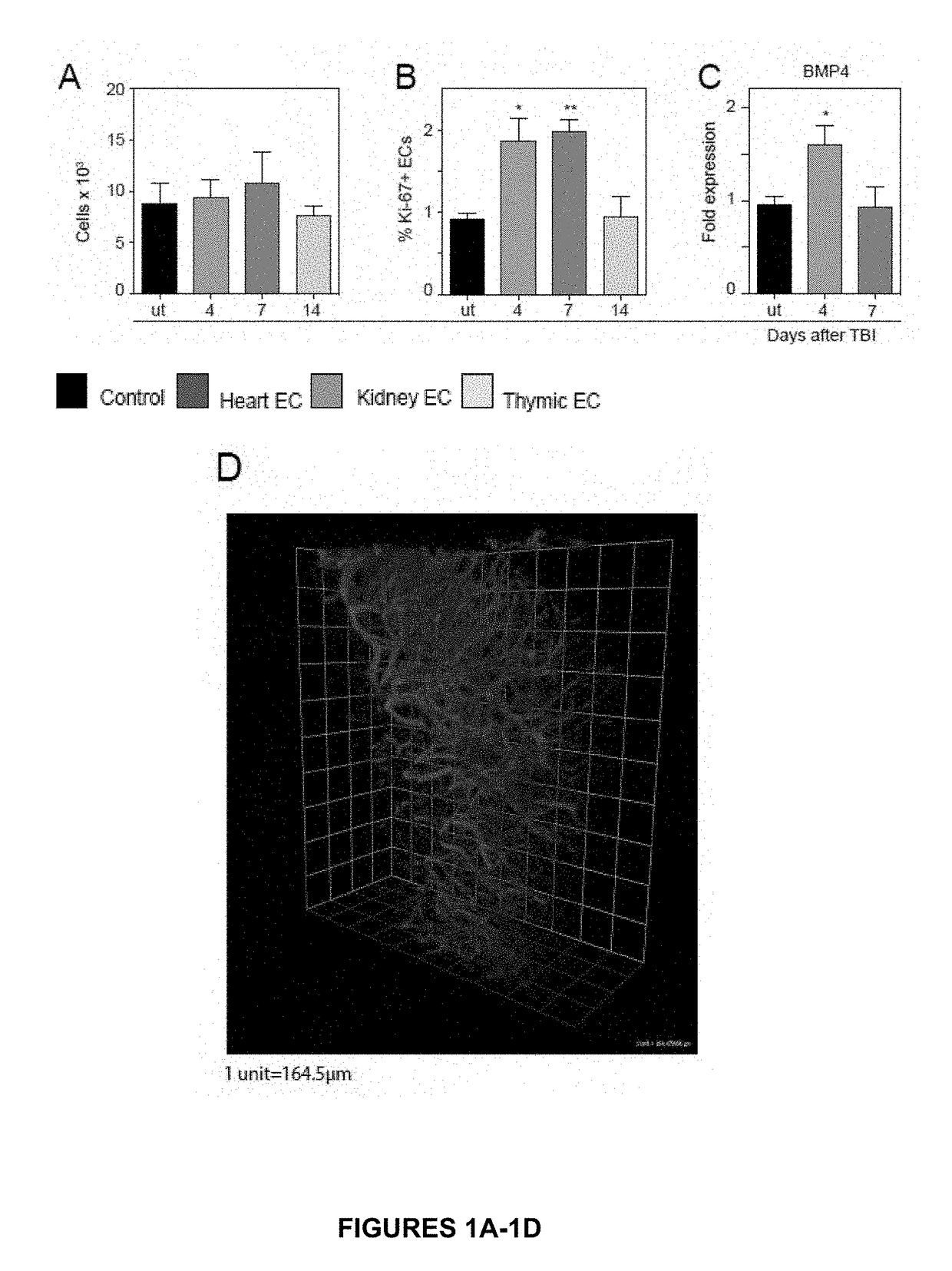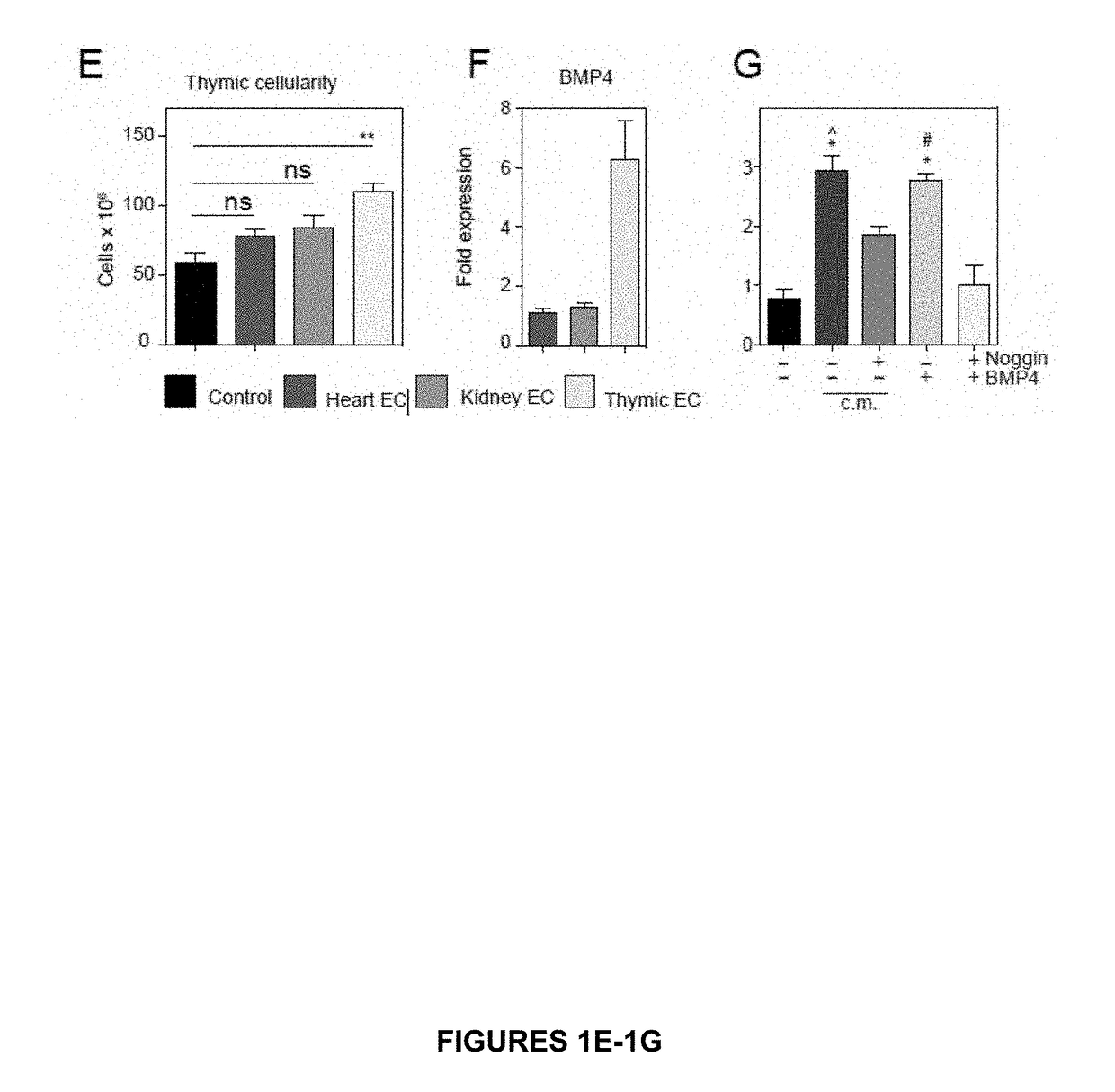Use of bmp4 for thymic regeneration
a technology of thymic epithelial cells and bmp4, which is applied in the field of thymic epithelial regeneration and recovery from injury, can solve problems such as decline, and achieve the effects of increasing the level of bmp4, and enhancing thymic epithelial cell function
- Summary
- Abstract
- Description
- Claims
- Application Information
AI Technical Summary
Benefits of technology
Problems solved by technology
Method used
Image
Examples
examples
Cultivation of Thymic ECs Ex Vivo and Administration After Damage to Mediate Enhanced Thymic Regeneration
[0056]To assess the regenerative potential of exECE4ORF1, young C57BL / 6 mice were exposed to a sublethal dose of irradiation (550 cGy) and 72 h hours following irradiation 1×106 exECE4ORF1 were injected intravenously. Mice transplanted with exECE4ORF1 showed significantly increased thymic cellularity (FIG. 3a), including TECs (FIG. 3b) and thymocyte subsets (FIG. 3c) compared to control mice on days 9 and 28 after irradiation.
[0057]To test the engraftment and persistence of transplanted ECs, thymic exECE4ORF1 from transgenic mice with constitutive expression of firefly luciferase were generated (luc+exECE4ORF1). In the same model as described above, luc+exECE4ORF1 could be detected as early as 2 hours post injection using a bioluminescence imaging system and appeared to localize to the thymic area (FIG. 3d). Consistent with this, using exECE4ORF1 derived from mice with GFP under ...
PUM
| Property | Measurement | Unit |
|---|---|---|
| mean±SEM | aaaaa | aaaaa |
| soluble | aaaaa | aaaaa |
| Heat map | aaaaa | aaaaa |
Abstract
Description
Claims
Application Information
 Login to View More
Login to View More - R&D
- Intellectual Property
- Life Sciences
- Materials
- Tech Scout
- Unparalleled Data Quality
- Higher Quality Content
- 60% Fewer Hallucinations
Browse by: Latest US Patents, China's latest patents, Technical Efficacy Thesaurus, Application Domain, Technology Topic, Popular Technical Reports.
© 2025 PatSnap. All rights reserved.Legal|Privacy policy|Modern Slavery Act Transparency Statement|Sitemap|About US| Contact US: help@patsnap.com



